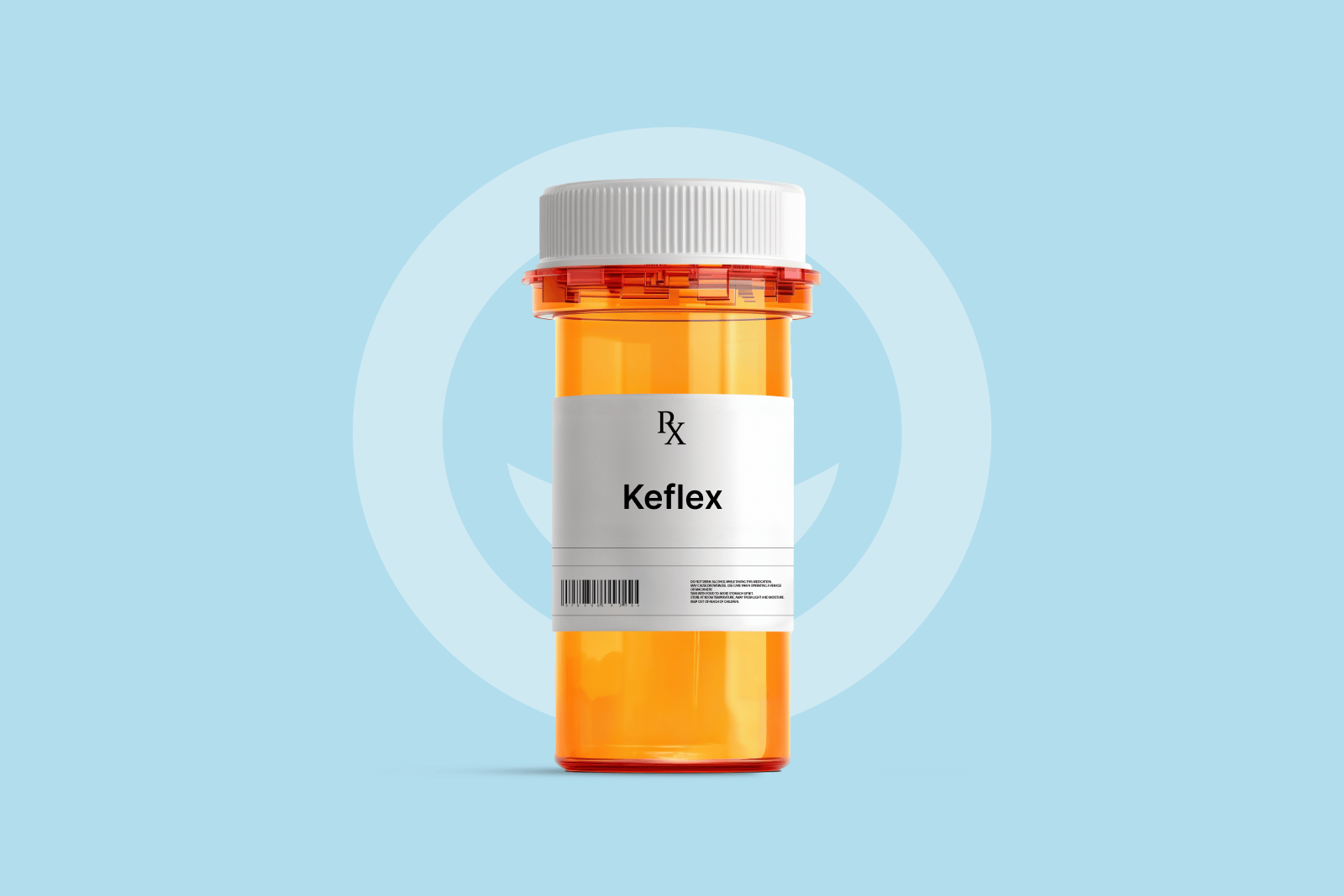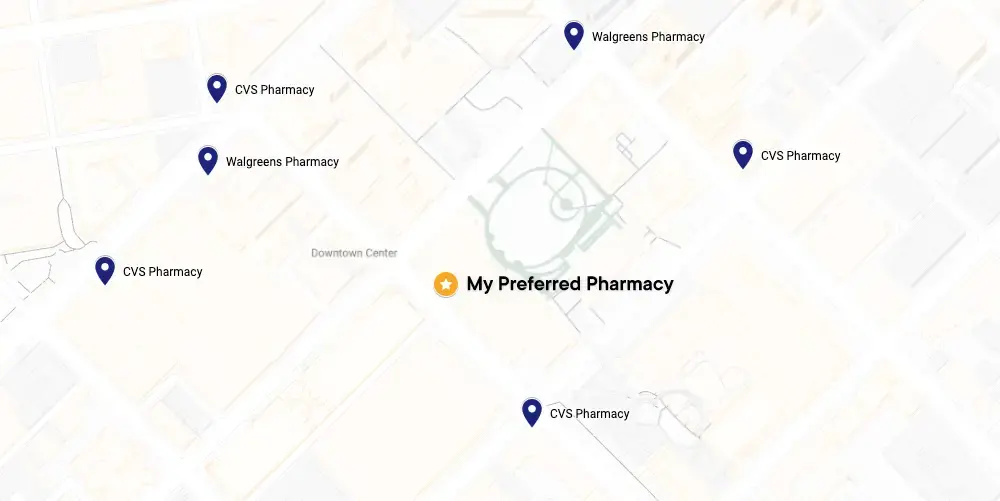
Keflex antibiotic prescription available online
If you are suffering from bacterial infections, the antibiotic Keflex can help. Get a new medication prescription or refill of Keflex today from a board-certified doctor online.*
About Keflex
Keflex is considered a cephalosporin antibiotic, which functions by stopping the growth of bacteria. Like any cephalosporin antibiotic, this medication can only be used to treat bacterial infections. It is ineffective against cold and flu viruses because they are viral infections.
Some conditions that Keflex is known to treat include infections caused by bacteria, including ear, skin, urinary tract, and upper respiratory infections. Keflex is available only by prescription. It is available in a generic formulation as well as under different brand names, including Bio-Cef and Panixine DisperDose.
Keflex may be prescribed in a capsule: 250 mg, 500 mg, and 750 mg. It’s always important to follow the specific instructions on your prescription, as they can vary based on the formulation and dosage that you are prescribed.
If you are prescribed Keflex, be sure to complete the full course unless your doctor specifically tells you to stop.
If you don’t complete your prescription, the cephalosporin antibiotic may not fully treat your bacterial infection.
Keflex uses
There are 5 FDA-approved uses for Keflex, but it may also be used off-label to treat other conditions. Your online medical professional may prescribe it for any of the following common reasons. It’s also possible that your health care provider may prescribe it for other reasons not listed here. Ask your online doctor or pharmacist if you have questions about why a medication is prescribed.
Respiratory tract infections
Otitis media
Skin infections
Bone infections
Genitourinary tract infections
Keflex side effects
The side effects associated with taking Keflex are typically mild. Most Keflex side effects are associated with gastrointestinal discomfort. Keflex has some common side effects. They may include:
Other side effects, which are less common but might be more severe, could include:
How to take Keflex
Be sure to read your prescription label and follow the instructions. Call your doctor or pharmacy if you have any questions.
Keflex can come in different forms and doses, so be sure to follow the specific instructions on your prescription.
It is typically prescribed every six hours.
Some specific instructions may include 250 mg every 6 hours for 7 to 14 days. Your doctor can prescribe a dose of 500mg for more severe infections.
What to avoid while taking Keflex
It is important to avoid multivitamins when taking Keflex. Any product with zinc can interfere with absorption.
Ask your doctor or pharmacist if it is acceptable to consume alcohol while taking Keflex.
Some research shows that regular alcohol consumption may not impact Keflex. Alcohol may also reduce the medication’s ability to do its job, making it harder to fight the infection.
Stop taking Keflex immediately if you have any allergic reactions to it. Get medical assistance immediately, as there is the potential for serious allergic reactions.
Medication alternatives to Keflex
Respiratory tract infections
Otitis media
Skin and skin structure infections
Bone infections
Genitourinary tract infections
Keflex prescription FAQs
How much does Keflex cost?
How can I refill my Keflex prescription?
What happens if you take Keflex on an empty stomach?
How long does it take for Keflex to work for bacterial infection?
How long does it take to feel better on Keflex?
Who should not take Keflex?
People who take other drugs that are known to interact with Keflex. Also, Keflex should not be taken by anyone with the following conditions:
-
Inflammation of the large intestine
-
Chronic kidney disease stage 4 or 5
-
Kidney disease with likely reduction in kidney function
What happens if I miss a dose of Keflex?
What happens if I take too much Keflex?
3 simple steps to request your Keflex prescription today

Book a Keflex prescription appointment.

Talk to your medical provider regarding your Keflex prescription.

Pick up your Keflex prescription.
Keflex prescription pricing details
To get a new or refill on your Keflex prescription, join our monthly membership and get discounted visits.
30 days of free membership
- Same-day appointments 7 days a week
- Unlimited messages with your Care Team
- Prescription discount card to save up to 80%
- Exclusive discounts on lab tests
- Free memberships for your family
- Cancel anytime
Paying with insurance
Membership
$19.99
First month free
Visits
Copay
Visit price with insurance
Often the same as an office visit. Most patients with in-network insurance pay $30 or less!
We accept these insurance plans and many more:



Paying without insurance
Membership
$19.99
First month free
Visits
$129
Visit price without insurance
Keflex prescription resources
Sources:
PlushCare is dedicated to providing you with accurate and trustworthy health information.
-
U.S. Food and Drug Administration. KEFLEX (cephalexin) Label Information. Accessed on October 16, 2023 at https://www.accessdata.fda.gov/drugsatfda_docs/label/2018/050405s107lbl.pdf.
-
Mayo Clinic. Cephalexin (Oral Route): Side Effects. Accessed on October 16, 2023 at https://www.mayoclinic.org/drugs-supplements/cephalexin-oral-route/side-effects/drg-20073325?p=1.
-
Cleveland Clinic. Cephalexin (Capsules or Tablets). Accessed on October 16, 2023 at https://my.clevelandclinic.org/health/drugs/20055-cephalexin-capsules-or-tablets.
PlushCare content is reviewed by MDs, PhDs, NPs, nutritionists, and other healthcare professionals. Learn more about our editorial standards and meet the medical team. The PlushCare site or any linked materials are not intended and should not be construed as medical advice, nor is the information a substitute for professional medical expertise or treatment.